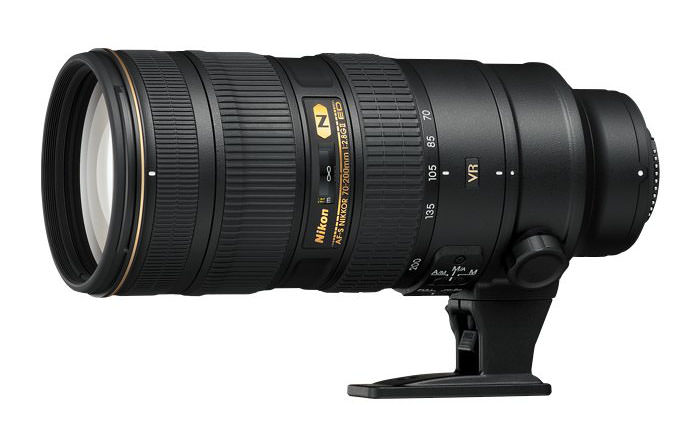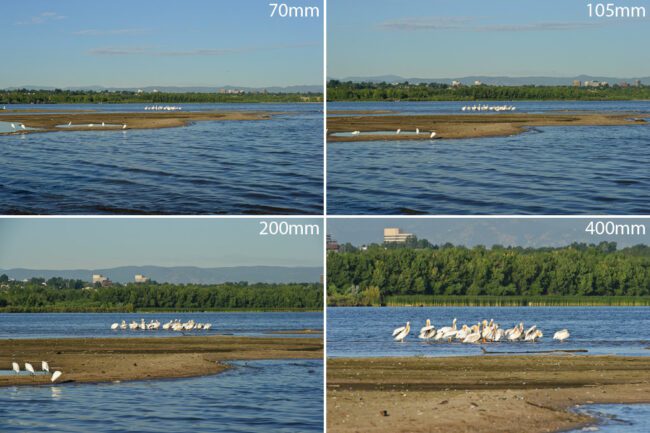Prime vs Zoom Lenses
In recent years, zoom lenses have been taking over the hearts of many working professional photographers as the more obvious, versatile choice. With the latest image sensors producing amazing quality, even at extremely high ISOs, it makes sense why more people have been leaning towards the convenience of zoom lenses. Zoom lenses have also gotten impressively sharp – most, even some cheap kit lenses, are sharp enough for day-to-day needs and also boast effective image stabilization systems. Some of the modern pro-grade lenses offer image quality that matches or even surpasses primes lenses in the same focal range. Despite all this, prime lenses haven’t really lost their desirability. Lens manufacturers such as Nikon and Canon have been rapidly updating and expanding their lens arsenal with new and better choices. Third-party manufacturers like Sigma are stepping into the game with confidence. Thanks to this, choosing between a zoom and a prime lens is now harder than ever. In this beginner guide, I talk about prime vs zoom lenses in detail, explaining their differences, along with some image samples.

1) What is a Prime Lens?
A prime lens is a lens with a fixed focal length (also commonly referred to as a “fixed lens”). What this means is that such a lens has a set angle of view which can not be changed – unless you move, you can not make the image appear larger or smaller within the frame. The only way of enlarging your subject and making it fill more of the frame is by physically getting closer to it. In turn, the only way to fit more into the frame is to step back.
Prime lenses have a single specified focal length, like 50mm. They come in all kinds sizes and focal lengths, from fisheye to super telephoto. Examples of prime lenses: Nikon 50 f/1.8G, Canon 800mm f/5.6L IS, Sigma 35mm f/1.4.
2) What is a Zoom Lens?
A zoom lens, on the other hand, has a variable focal length. By turning the zoom ring, you move optical elements inside the lens to achieve a different angle of view. This means that you can make objects appear larger by turning the zoom ring in one direction, or fit more objects into the frame by turning it in the opposite direction.
Zoom lenses have two specifications which represent the two extremes of the zoom range, for example – 70-200mm. Such a lens may act as a 70mm focal length lens, a 200mm focal length lens and everything in-between. In addition, zoom lenses could also have variable aperture ranges. On many consumer zoom lenses, you will often see something like f/3.5-5.6, which represents the maximum aperture of the lens at different focal lengths. For example, a lens like Nikon 18-55mm f/3.5-5.6 will have a maximum aperture of f/3.5 at the shortest focal length of 18mm, while at the longest range of 55mm, its aperture will be limited to f/5.6. On the other hand, most professional-level zoom lenses will have a single maximum aperture throughout the zoom range. Examples of zoom lenses: Nikon 18-200mm f/3.5-5.6G VR II, Canon 16-35mm f/2.8L II, Sigma 70-200mm f/2.8.
3) Advantages of Prime Lenses
So why do we need fixed focal length lenses? Here is the list of main advantages primes offer over zoom lenses.
3.1) Cost
Many modern prime lenses are significantly cheaper than their zoom counterparts. A 24mm f/2.8 lens will set you back around $400, while a 24-70mm f/2.8 will cost $1900-2300. Even if you cover focal lengths between 24mm and 70mm with fast primes like 35mm f/1.8, 50mm f/1.8 and 85mm f/1.8, you will still end up paying less. For this reason, photographers on a budget have the chance to experience world-class optics at a fraction of a cost of those expensive variable focal length lenses, and there is no need to make compromises with cheap, lower quality zoom lenses all the time.
3.2) Size and Weight
Surprisingly, many beginners often desire monstrous lenses like 70-200mm f/2.8 with image stabilization. True, these lenses are extremely sharp, have insanely fast autofocus motors and can survive plenty of abuse. However, they are also much more noticeable due to their sheer size, and their heavy weight can cause back and neck pain and even long-term injuries.

We can already see just how big this problem is by looking at the booming mirrorless market – even professionals jump at the chance to own lightweight, high quality gear. Prime lenses offer something of a compromise – they trade versatility in favor of size and weight. A while ago, I decided to go with the 85mm f/1.4 lens instead of the 70-200 f/2.8 and never really regretted this decision. Having only big lenses may sometimes mean you will leave your camera at home instead of taking it with you wherever you go.
3.3) Learning Factor
Many photographers believe that being forced to “zoom” in/out using the old-fashioned way, by walking, is a good way of learning composition and finding better angles. It also supposedly helps one get used to a lens better and use it to its full potential. I partially agree with this and I can say that my 50mm prime has helped me in some regards, but in all honesty, such a restraint can be equally damaging to your learning process. I believe it is important to have at least one zoom lens if you are a prime shooter, and vice versa.
3.4) Aesthetics
Most fast, professional zoom lenses, such as 14-24mm, 24-70mm and 70-200mm, have a fixed maximum aperture of f/2.8. Fast, professional prime lenses on the other hand, can go as wide as f/1.2. For this reason, they offer not just better light gathering abilities, but also shallow depth of field, which can result in photographs with beautifully rendered background highlights known as “bokeh“.

Many beginner photographers often wonder why they do not seem to be able to get beautifully separated subjects when using their kit zoom lenses. Due to the small maximum aperture and lower quality lens optics, it is often impossible to get good-looking, “creamy” backgrounds with consumer zoom lenses.
3.5) Low Light
A fast prime lens will allow you to shoot subjects in low light environments without introducing blur, thanks to a larger / wider aperture. Due to typically simpler optical designs, prime lenses can easily “open” up to f/2 or even f/1.2.

Such lenses will let in twice to three times as much light as a fast professional zoom lens with an aperture of f/2.8. While many zoom lenses feature optical image stabilization systems to help you in low-light conditions, such systems are useless if you have a moving subject.
4) Zoom Lens Advantages
If everything were in favor of prime lenses, no one would use zooms. Despite their extra weight and cost, they are extremely popular and can be very convenient to use. There are several areas where even the best fixed focal length lenses have no way to beat a good zoom. Below are the advantages offered by variable focal length lenses.
4.1) Versatility
The most obvious reason for buying zoom lenses is their versatility. Zoom lenses can be great when a photographer needs to be sure he can handle a variety of different situations – you can go from wide-angle to telephoto in a quick turn of the zoom ring without the need to physically move. Landscape and wildlife photographers, for example, are often limited to a particular spot or area, so being able to zoom to an area of interest can be invaluable for properly framing a shot.

4.2) Image Stabilization
Modern zoom lenses often offer 3-4 stop image stabilization systems, be it Canon’s Image Stabilization (IS), Nikon’s Vibration Reduction (VR), Sigma’s Optical Stabilization (OS) or Tamron’s Vibration Compensation (VC). Even if you have an f/4 lens you can still get sharp images when shooting non-moving subjects in dark environments. Thanks to the image stabilization technology, your lens will make some of its internal optical elements move and shift to counter camera shake, which lets you use extremely slow shutter speeds.
Image stabilization is not just limited to zoom lenses. Some of the newer fixed focal length lenses also boast image stabilizer technologies, such as the newly announced Canon 35mm f/2 IS. Lastly, do keep in mind that image stabilization can be present on lenses or camera bodies. Sony and Pentax DSLRs, for example, have sensor-based image stabilization, which will work with pretty much any mounted lens.
4.3) Portability
A single zoom lens can replace two or three prime lenses. This also means that you only need to worry about moving around with a single attached lens. A single zoom lens might save you from carrying a large backpack. In a way, certain zoom lenses allow you to reduce weight, because you don’t need to bring several primes to cover the whole range. Less lens swapping also means cleaner sensor and optical elements.
5) Final Words
Beginner photographers are often faced with a choice between buying a fixed focal length lens or a zoom lens. As you can see from this article, both have their advantages and disadvantages, so choosing between the two can be quite difficult indeed. It takes time to realize which gear suits your style of shooting better. Some people end up with a single “do it all” superzoom lens, while others swear by their prime lenses and refuse to ever touch a zoom lens. As you learn how to use your gear overtime and start ironing out your photography skills, it really does not matter what you pick, as long as it does not stop your creativity.
If you have enjoyed this article, please check out our in-depth Level 1 Photography Basics Course, where we explore all the basics of photography in much more detail. It is an intensive, 5+ hour course with enough material to not only get you started today, but also to serve as a reference material in the future.
Prime vs Zoom Lenses
![Prime vs Zoom Lenses]() Reviewed by Ariful Haque
on
7:44 AM
Rating:
Reviewed by Ariful Haque
on
7:44 AM
Rating:
King of Slots - Shootercasino
ReplyDeleteKing of Slots. King of Slots. Slot machine. 제왕카지노 King of slots is a popular and exciting slot game. A great way to play is to visit one of our top septcasino casinos 온카지노